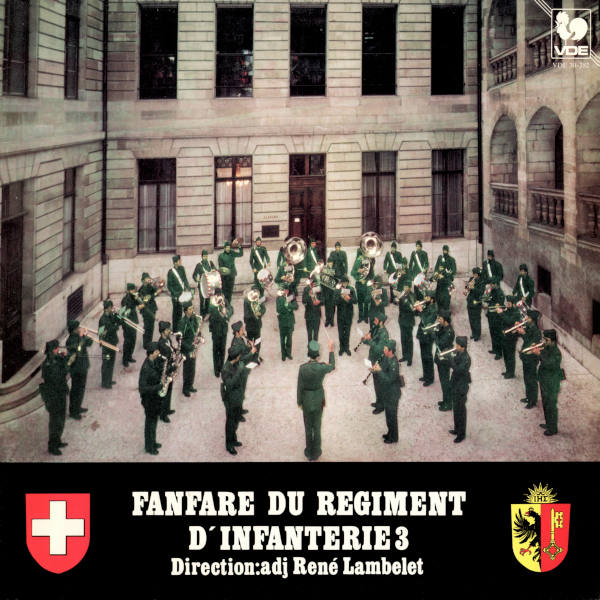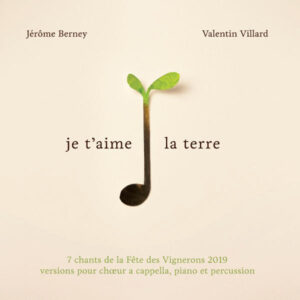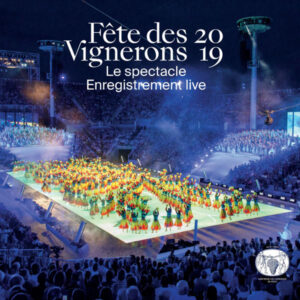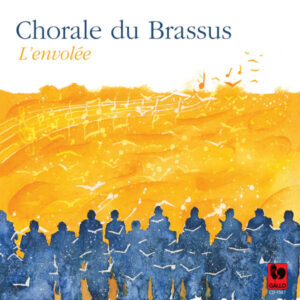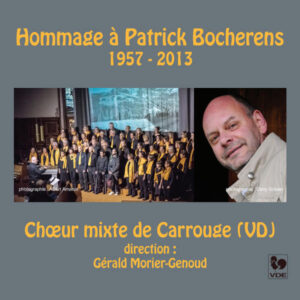Extraits / Excerpts
Swiss Military Band Music: Bosch - Sibelius - Verdi - Sonntag - Berger - Cours de répétition 1983 à Buttes (NE) - Fanfare du régiment d'infanterie 3, René Lambelet
Adrian BOSCH Sr.: K. M. K. – Jean SIBELIUS: Finlandia (Arr. by Pieter Jan Molenaar) – Giuseppe VERDI: La traviata, Act 1: Prelude (Arr. by Otto Zurmühle) – Gottfried SONNTAG: Marche des Nibelungen (Arr. by Max Villinger) – Friz BERGER: Radac – Jacques DUHAMEL: Rouge et jaune – Charles Richard SPINNEY: The Battle of Jericho – David BENNET, Harold Laurence WALTERS, Paul YODER: Arrangers Holiday – Jerry GRAY: String of Pearls (Arr. by Jack Ham) – Traditional: Bill Bailey (Arr. by Zanevan Auken) – Louis SCHMIDT: Défilé
Fanfare du régiment d’infanterie 3, René Lambelet, Conductor
The band of the 3rd Infantry Regiment was constituted in its current regimental form in 1953 during the reorganization of military bands. The staff was then composed of 40 wind instruments and 10 drums. Only the independent battalions kept a reduced brass formation until 1980. On January 1st, 1983, the staff was increased to 61 musicians, namely 3 non-commissioned officers, 18 woodwinds, 31 brass, 2 percussionists and 7 drummers. The band of the 3rd Infantry Regiment has been led since 1980 by Warrant Officer René Lambelet who, this year, carried out his last rehearsal course at the head of this excellent harmony formation.
MUSICAL PROGRAM
K.M.K.
It is one of the most beautiful military marches, composed especially for the 150th anniversary of the Royal Military Band of Holland (Koninlijke Militaire Kapel) in 1979 by Adriaan Bosch senior.
FINLANDIA
Jean Sibelius (1865-1957) left us this wonderful symphonic poem which has become very popular and characterizes for many the austerity and charm of the lakes and forests of Finland. After a dark and dramatic introduction, depicting the tensions existing between Russia and his native country at the beginning of the century, Sibelius evokes, through a nostalgic hymn, the importance of faith for the Scandinavian people.
PRELUDE DE LA TRAVIATA
Born the same year as Richard Wagner, in 1813, Giuseppe Verdi began composing his operas at the age of 23 and signed twenty-six of them during his life, which ended in 1901. Written on a text by Dumas fils – La Dame aux Camélias – La Traviata remains very accessible with its charm that undoubtedly has no more moving and harmonious expression than the instrumental prelude arranged here for harmony formation.
MARCHE DES NIBELUNGEN
The March of the Nibelungen is a reference to the Ring of Richard Wagner, whose death centenary we are marking this year. Wagnerians will recognize several themes from the Tetralogy: a) the motif of Donner, god of storms, b) The sword, which Wotan will use to fight against the dark designs of Alberich, c) The call of Siegfried, who will seize the Ring and d) Walhalla, a sumptuous edifice, symbol of Wotan’s power.
RADAC
If the assault rifle of the Swiss army can fire up to 10 shots/sec, a drummer of the band of the rgt inf 3 settles for 9 shots/sec. But there are nine of them hitting simultaneously and therefore reach the performance of 81 shots/sec! In total, 17820 baton strokes synchronized by that of appointee Christian Martin.
ROUGE ET JAUNE
On November 14, 1963, the first parade of the Geneva regiment in assault uniform took place and it was on this occasion that Rouge et Jaune was dedicated to the cmdt of the bat inf 3, the major – meanwhile become colonel —- Maurice Reiser. Jacques Duhamel was then the leader of the band of the rgt inf 3. This march cleverly reminds us of a page of Genevan history with the “Ce que l’aino a deux temps” in the trio’s repeat.
THE BATTLE OF JERICHO
With “The Battle of Jericho”, Charles R. Spinney demonstrates a great talent for transforming a traditional melody into a surprisingly dramatic piece of music. After a brief introduction, we are led by a serene four-beat march towards a mysterious motif, sung by the register of the violas. The march then intensifies, leading us to a percussion solo. The call to battle is then given by the trumpets and, morphing into a five-beat rhythm, constructs the famous battle of Jericho, at the end of which a powerful dissonant chord provokes the collapse of the city walls. The “Go down Moses, Let my people go” forms a conclusion that is at first painful then victorious.
ARRANGERS’ HOLIDAY
On a fine day in 1953, three of the best American composers for harmony decided to unite their talents and create a fantasy on the theme of “Quand trois poules vont aux champs” (When three hens go to the fields). After briefly planning the basic structure of the composition, they separated and each worked independently on a third of the arrangement. The result is a very pleasant piece both for the performers and for the listeners.
STRING OF PEARLS
This is about “String of Pearls”, one of the biggest hits of the Glenn Miller Orchestra, in which Gérard Zihlmann on the alto sax, Beat Windler on the tenor sax, and Luc Dewarrat on the trumpet highlight their improvisational talents.
BILL BAILEY
A traditional tune masterfully arranged by Zan van Auken. Beat Clerc stands out on the solo trumpet in a chorus in his own style!
DÉFILÉ
This very beautiful composition by Morgien composer Louis Schmidt was discovered in the archives of the band of the rgt inf 3 and quickly became the march of the EM company commanded by Capt Dominique Louis. The drum accompaniment comes from the pen of the undersigned.
Warrant Officer René Lambelet
- Categories
- Composers
- Interprets
- Booklet
